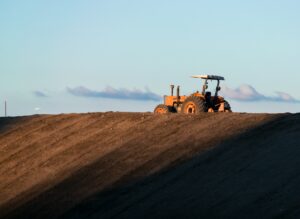Swampbuster forces farmers to give up their rights or risk financial ruin

Nearly 40 years ago, Congress enacted the Food Security Act of 1985, a comprehensive bill about farming. Included in this bill were wetland conservation provisions that govern how farmers must treat wetlands on their property. Despite the name of the bill, these provisions—colloquially known as “Swampbuster”—threaten food security by overregulating the farmers that provide food to the nation. Â
Swampbuster regulates how farmers can use their land by conditioning a farmer’s eligibility for various Department of Agriculture programs on compliance with the wetland regulations. Specifically, if farmers want to receive crop insurance or have access to some farm loans, they are not allowed to “convert” a wetland to make it easier to farm. Conversion includes draining a wetland or removing woody vegetation. Farmers must comply with these regulations even if the federal government would not be able to regulate these wetlands under the Clean Water Act or any other federal regulation. Â
In previous lawsuits challenging Swampbuster, the Department of Agriculture has defended the program by arguing it is voluntary for farmers to comply. The agency says that if farmers want to farm wetlands on their land, they merely have to agree to give up their eligibility to any program the agency administers. Â
But Swampbuster is not truly voluntary. These insurance, loans, and other financial programs were created in the 1930s, so farmers used these programs for nearly a half century without restriction. Then the federal government suddenly imposed new regulations on farmers who wanted to continue farming how they had always been farming. Furthermore, many of these programs were adopted to offset the harm caused by other regulations imposed by the federal government. For example, in 1935 Congress created the Resettlement Administration to relocate entire farm communities to other areas of the country. To offset the costs of relocation, the USDA began administrating loan programs to farmers. Â
In other words, the federal government created various programs to help farmers deal with the repercussions of other federal policymaking. Over time, many farmers became dependent on these programs as a result of this back-and-forth regulatory regime. Then, in the 1980s, Congress decided that if farmers wanted to continue to access these programs, they would have to “voluntarily” regulate the use of their property. For most farmers, the choice was not really a choice: They either needed to submit to Swampbuster or lose their ability to have a profitable farming operation.Â
The USDA has used Swampbuster to regulate property it would not otherwise be able to regulate. The federal government’s power to regulate wetlands is limited not only by statute, but also by the Constitution itself. Congress only has the power to regulate interstate commerce. It cannot regulate wetlands that do not flow into or otherwise affect rivers that cross over state lines. Â
Swampbuster is an attempt to get around the Constitution’s Interstate Commerce Clause and regulate wetlands the federal government would not otherwise be able to. In response to some lawsuits challenging Swampbuster, the USDA has claimed that Swampbuster comes from the Spending Clause of the Constitution—the clause that authorizes Congress to spend money. Â
But Congress cannot use its spending power to force someone to give up its rights. Under the doctrine of unconstitutional conditions, the government cannot condition the receipt of a benefit on the waiver of constitutional rights. In other words, the government cannot demand a farmer give the federal government control over wetlands the government could not otherwise regulate just because the farmer may receive some benefits from the government.          Â
Swampbuster forces farmers to give up not only their rights protected by the Commerce Clause of the Constitution, but also those protected under the Takings Clause. In effect, Swampbuster requires a farmer to give a conservation easement to the federal government—that is, an agreement that the farmer will not affect the wetlands on his or her property. The federal government could not simply demand a conservation easement from the government; tying the transfer of that easement to Department of Agriculture programs does not make the demand constitutional. Â
The federal government cannot regulate every piece of property in the country. The Constitution establishes a principle of federalism where regulatory authority is split between the federal government and state government and the federal government has limited powers. The Constitution also establishes protections for property owners. Swampbuster is an attempt to work around the Constitution’s limitations; that is why PLF is bringing several challenges to the statute to ensure the federal government does not exceed its lawful regulatory power. Â








